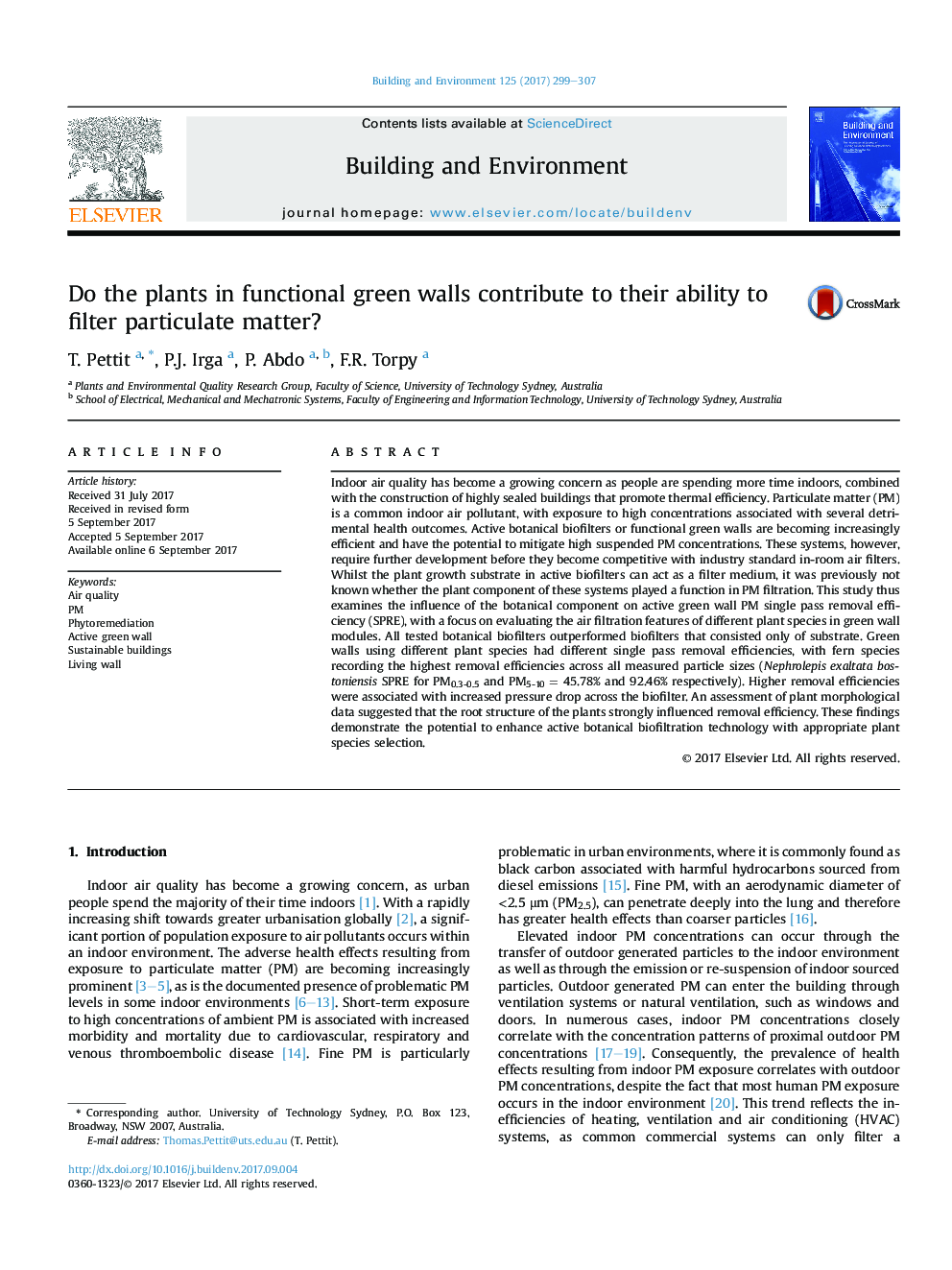| Article ID | Journal | Published Year | Pages | File Type |
|---|---|---|---|---|
| 6479231 | Building and Environment | 2017 | 9 Pages |
â¢Active botanical biofilters can reduce ambient atmospheric particulate matter concentrations.â¢Particulate matter removal efficiency is influenced by active green wall plant species.â¢Removal efficiency is correlated with pressure drop across the green wall module.â¢Plants with fibrous roots have higher removal efficiencies than tap root species.
Indoor air quality has become a growing concern as people are spending more time indoors, combined with the construction of highly sealed buildings that promote thermal efficiency. Particulate matter (PM) is a common indoor air pollutant, with exposure to high concentrations associated with several detrimental health outcomes. Active botanical biofilters or functional green walls are becoming increasingly efficient and have the potential to mitigate high suspended PM concentrations. These systems, however, require further development before they become competitive with industry standard in-room air filters. Whilst the plant growth substrate in active biofilters can act as a filter medium, it was previously not known whether the plant component of these systems played a function in PM filtration. This study thus examines the influence of the botanical component on active green wall PM single pass removal efficiency (SPRE), with a focus on evaluating the air filtration features of different plant species in green wall modules. All tested botanical biofilters outperformed biofilters that consisted only of substrate. Green walls using different plant species had different single pass removal efficiencies, with fern species recording the highest removal efficiencies across all measured particle sizes (Nephrolepis exaltata bostoniensis SPRE for PM0.3-0.5 and PM5-10Â =Â 45.78% and 92.46% respectively). Higher removal efficiencies were associated with increased pressure drop across the biofilter. An assessment of plant morphological data suggested that the root structure of the plants strongly influenced removal efficiency. These findings demonstrate the potential to enhance active botanical biofiltration technology with appropriate plant species selection.
